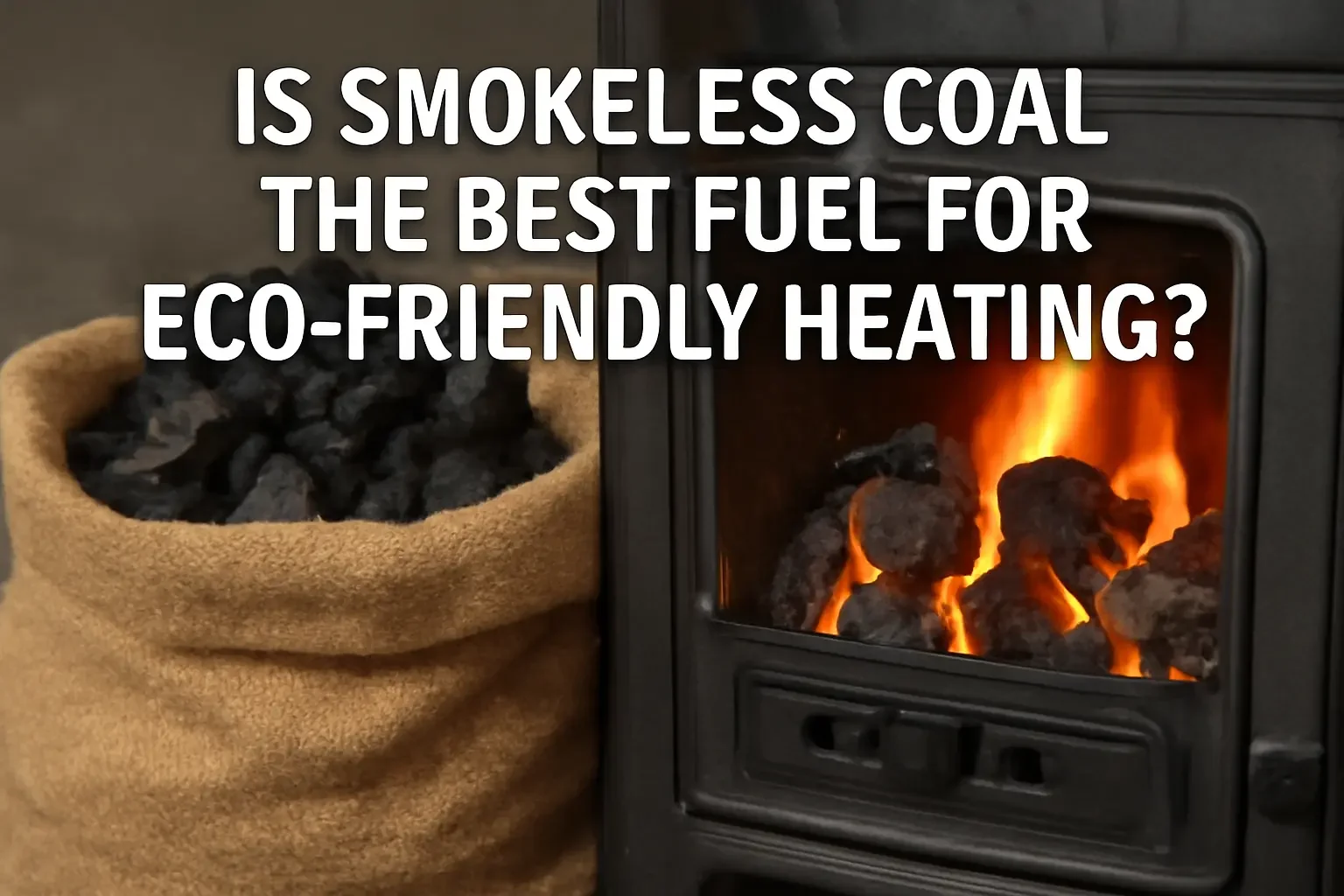Is Smokeless Coal the Best Fuel for Eco-Friendly Heating?
When it comes to heating your home, there are numerous fuel options available, each with varying degrees of efficiency and environmental impact. One of the most talked-about options in recent years is smokeless coal. As concerns over climate change and air pollution grow, homeowners are increasingly seeking sustainable and eco-friendly heating alternatives. Smokeless coal has emerged as a popular choice, but the question remains: Is smokeless coal the best fuel for eco-friendly heating?
What is Smokeless Coal?
Smokeless coal, also known as smokeless fuel, is a type of coal designed to burn with minimal smoke emissions. It is manufactured by treating traditional coal to remove impurities such as sulfur and volatile compounds. This results in a cleaner, more efficient burning process that produces far less smoke and fewer harmful pollutants.
Smokeless coal is often used in stoves, open fires, and fireplaces, and it is particularly popular in areas where local regulations restrict the use of solid fuels that produce large amounts of smoke. It's worth noting that while smokeless coal burns cleaner than traditional coal, it still has an environmental footprint.
How Does Smokeless Coal Compare to Other Fuels?
When considering eco-friendly heating, it’s important to compare smokeless coal to other common fuel options like wood, oil, and gas. Here's a breakdown:
1. Wood
Pros: Wood is often considered a renewable resource, especially when sourced sustainably. When burned efficiently in modern wood stoves, it can produce less carbon dioxide (CO2) than coal.
Cons: Wood burning can still contribute to air pollution, including particulate matter (PM), which can harm respiratory health. In some areas, the use of wood stoves is being restricted due to these concerns.
2. Oil
Pros: Oil is efficient and provides high heat output, making it a popular choice in colder regions.
Cons: Oil is a non-renewable fossil fuel, meaning it contributes to greenhouse gas emissions. It is also more expensive than other fuels and has a significant environmental impact during extraction and transportation.
3. Gas
Pros: Natural gas is often considered the cleanest of fossil fuels, producing fewer emissions compared to coal or oil.
Cons: While cleaner than coal, natural gas still contributes to CO2 emissions. Additionally, the extraction process, particularly through hydraulic fracturing (fracking), can cause environmental harm.
4. Smokeless Coal
Pros: Smokeless coal burns more efficiently than traditional coal, producing less smoke and fewer pollutants. It provides a high heat output and is reliable in colder climates.
Cons: While cleaner than regular coal, smokeless coal still releases CO2 and other greenhouse gases, contributing to global warming. It is also a non-renewable resource, which means its long-term sustainability is a concern.
Benefits of Using Smokeless Coal for Eco-Friendly Heating
1. Reduced Air Pollution
One of the main reasons people choose smokeless coal is that it burns cleaner than traditional coal. By emitting significantly less smoke, it helps reduce air pollution in homes and surrounding areas. In regions where air quality is a concern, using smokeless coal can be a practical solution for homeowners who want the warmth of a solid fuel without the negative environmental impact of traditional coal.
2. Higher Efficiency
Smokeless coal tends to burn hotter and longer than regular coal, meaning you can use less fuel to achieve the same level of heat. This higher efficiency can translate into savings on your heating bills while reducing your carbon footprint.
3. Compliance with Regulations
In many cities and regions, there are strict regulations surrounding the burning of solid fuels due to their contribution to air pollution. Smokeless coal is often a preferred option in these areas because it meets local air quality standards, making it a legal and eco-friendly choice for heating.
Drawbacks of Smokeless Coal
1. Non-Renewable Resource
While smokeless coal burns cleaner than regular coal, it is still a non-renewable fossil fuel. This means that, like all fossil fuels, it contributes to the depletion of natural resources and the long-term sustainability of our energy systems.
2. CO2 Emissions
Although smokeless coal produces less smoke and particulate matter than traditional coal, it still releases carbon dioxide (CO2) when burned. CO2 is a greenhouse gas that contributes to global warming, so smokeless coal is not entirely "green" or carbon-neutral.
3. Cost and Availability
Smokeless coal can be more expensive than regular coal or wood, and it may not be as widely available in certain regions. Additionally, the price can fluctuate based on supply and demand, which can be an issue for homeowners on a tight budget.
Is Smokeless Coal the Best Option for Eco-Friendly Heating?
While smokeless coal offers several advantages in terms of efficiency and reduced air pollution, it is not the perfect solution for eco-friendly heating. Here’s why:
Renewable Energy Alternatives
There are more sustainable, renewable energy sources, such as solar heating, geothermal energy, and biomass fuels, that have less environmental impact and are more sustainable in the long run.Government Incentives
Many governments are promoting the use of renewable energy through tax incentives and subsidies. Investing in renewable energy systems for heating—such as solar panels or heat pumps—could provide significant environmental and financial benefits over time.Energy Efficiency
Modern homes are often better suited to energy-efficient heating systems, such as heat pumps or underfloor heating systems, which can provide the same level of comfort with less energy consumption.
Frequently Asked Questions (FAQs)
1. Is smokeless coal safe to use indoors?
Yes, smokeless coal is safe to use indoors as long as you follow proper ventilation guidelines. It produces less smoke than regular coal, but adequate airflow is still necessary to prevent carbon monoxide buildup.
2. How long does smokeless coal last?
Smokeless coal typically burns longer than regular coal. A single bag of smokeless coal can last for up to 24 hours in a well-maintained stove or fireplace, depending on the type and the specific stove used.
3. Can smokeless coal be used in all types of stoves?
Smokeless coal can be used in most modern stoves designed for solid fuel. However, it is important to check the manufacturer’s instructions to ensure compatibility with the specific type of fuel your stove is designed to burn.
4. Is smokeless coal better than wood for heating?
Smokeless coal generally burns hotter and longer than wood, making it a more efficient heating option. However, wood is considered a renewable resource when sourced sustainably, whereas smokeless coal is still a non-renewable fossil fuel.
5. Can smokeless coal help reduce heating costs?
Because smokeless coal burns longer and more efficiently than regular coal, it can help reduce heating costs over time. Additionally, its higher energy content means you need less fuel to achieve the same level of warmth.
Conclusion
Smokeless coal is a cleaner and more efficient alternative to traditional coal, making it an appealing option for those seeking eco-friendly heating solutions. However, while it does offer benefits in terms of air quality and efficiency, it is still a fossil fuel that contributes to greenhouse gas emissions and relies on non-renewable resources.
For truly sustainable heating, renewable energy sources such as solar, geothermal, or biomass are the best options in the long term. If you choose to use smokeless coal, it can certainly be a better option for reducing air pollution compared to regular coal, but it should be part of a broader strategy to reduce your home’s environmental impact.

